
Eusociality
Eusociality
In some animal species, individual organisms have very specialized roles. These strongly interdependent groups are called eusocieties.
Learning Objective: Provide examples of eusocial species, including the roles individuals play in these societies.
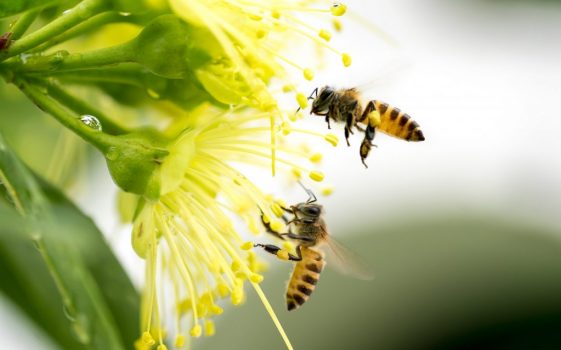
These worker bees are foraging for food. Other worker bees, the queen, and male drones back at the hive are dependent on these bees returning with food. Strongly interdependent societies are called eusocieties, or even super-organisms.
This video introduces the concept of eusocial behaviors.
Watch this video; you can select the closed captioning “cc” option if you would like to see the text.
Breeding colonies of naked mole rat eusocieties have been established in some zoos and research facilities. This one is located at the Oregon Zoo in Portland Oregon.
Ant Eusocieties
Many ant species form eusocieties. This video introduces ants with a range of artifacts.
Ants have some of the most intricate behaviors seen within invertebrate species. This includes coordinated efforts like these ants attempting to bridge a gap between branches.
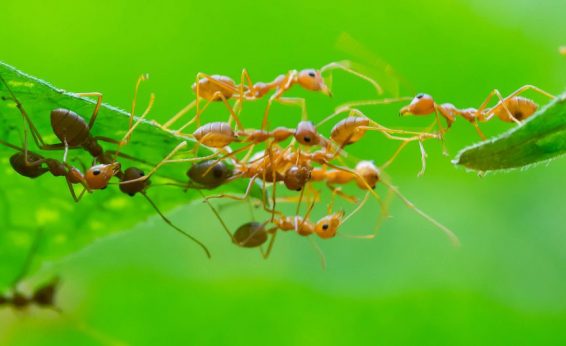
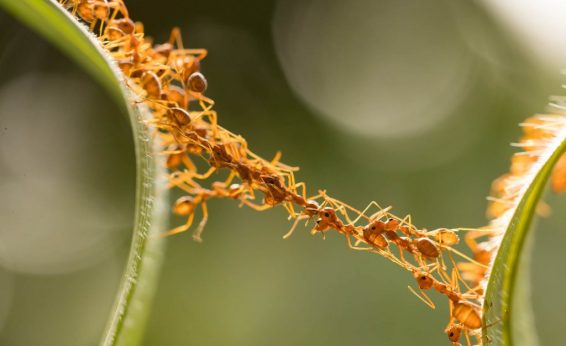
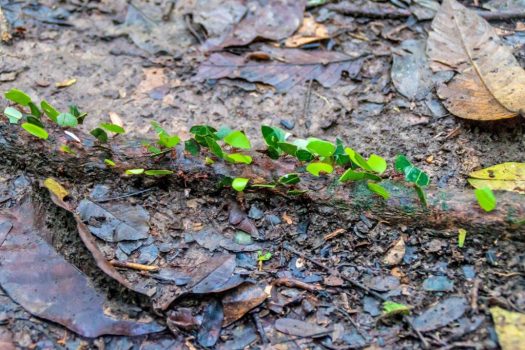
Ant species have incredibly varied diets. Leafcutter ants harvest and carry leaves back to their tunnels. The leaves are used as compost for the fungal colonies they grow underground. They are so efficient at foraging, a single colony’s underground tunnels can reach 30 meters in diameter.
A single ant can carry a leaf many times its body weight. The cuts seen on the leaves are made with powerful mandibles that also deter predators.
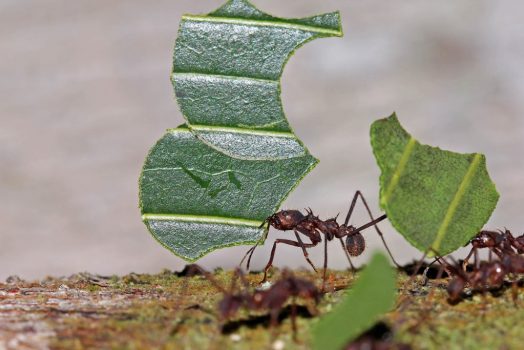
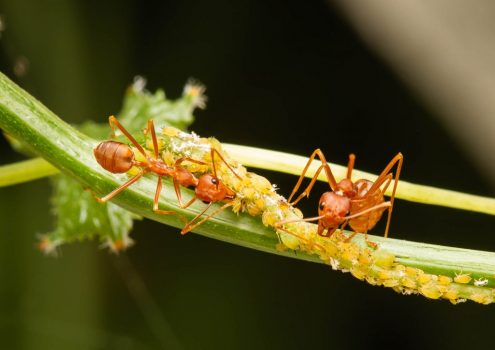
Honeydew is sugar water secreted by aphids that feed on plant sap. Different species of “honeydew ants” farm these aphids like mini cows. The ants protect the aphids, herd them to keep them from straying, and consume the honeydew the aphids produce.
This close association is an example of symbiosis. The honeydew ants benefit because they get nutrients, and the aphids benefit because the ants drive off predators like lady beetles. Which type of symbiosis is this?
You can check your answer in the symbiosis section.
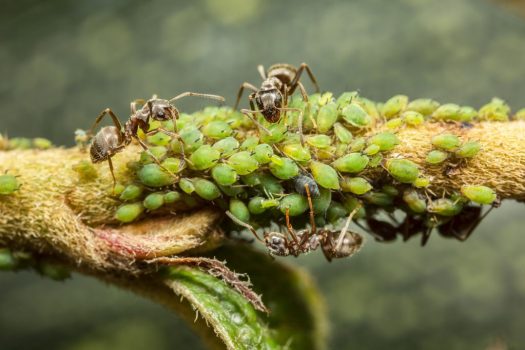
Observing Ants
Maintaining ants for study in an “ant farm” enclosure is popular because ants can be quite active and some species will dig tunnels in a provided substrate.
This video demonstrates the set-up for one of the most popular ant enclosures.
Ants, and their relatives termites, often appear uninvited to human enclosures.
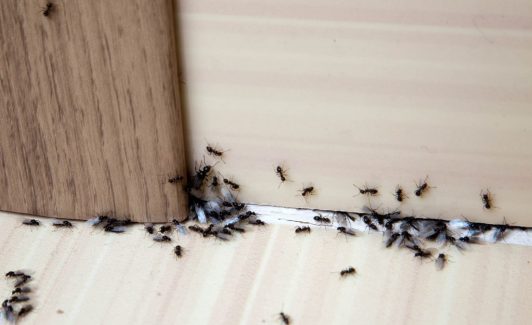
Typically we see ants moving from one point to another as they are in the photo. They follow chemical paths deposited by other ants.
Ants do spend time eating, resting and sleeping, we just don’t typical see it occurring. Note the tactile communication between ants in this video.
The next section focuses on Order Hymenoptera, insects, including ants, that can form eusocieties.











